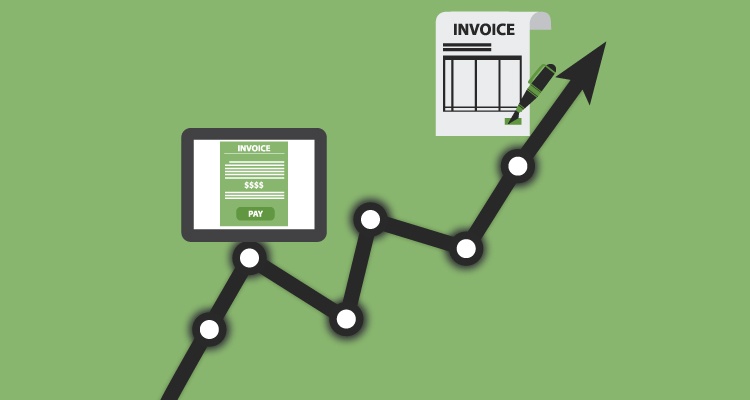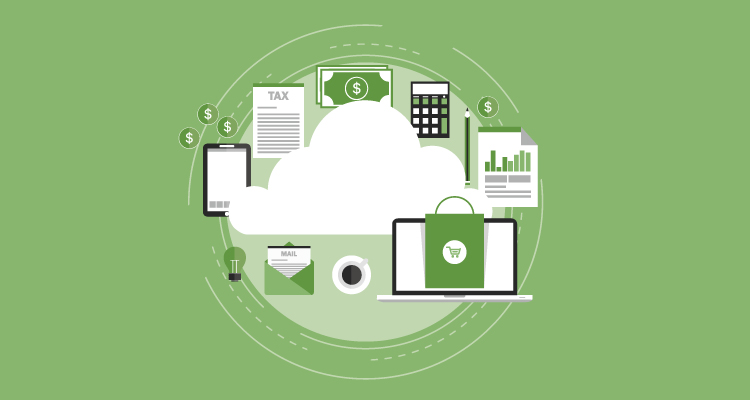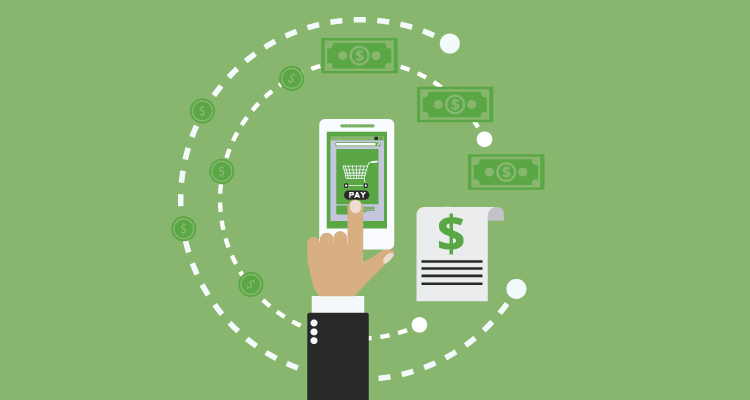When you think of invoicing, do you conjure up an image of someone hunched over a desk manually creating invoices? Or, do you think about generating invoices accurately and quickly through software?
For most business owners and freelancers, paper-based invoicing is an ineffective, time-consuming, and antiquated method of sending out bills. Thanks to the growing popularity of electronic invoicing, business owners or all sizes now have an accurate and speedy method to invoice their customers and clients.
However, e-invoicing is still relatively new and hasn’t been accepted by every business owner just yet. Hopefully, thanks it’s benefits, technological advancements, and government support, e-invoicing is poised to have a breakout year.
With that in mind, here’s the state of invoicing for 2017.

Table of Contents
ToggleGrowth in E-Invoicing, But Paper-Based Invoices Still Rule
“It is expected that the 2016 volume for e-bills/e-invoices will achieve around 30 billion worldwide with annual growth rates of 10-20%.,” reported Bruno Koch in the Billentis Report 2016. And, it’s easy to understand why.
For starters, e-invoicing is more cost-effective than paper-based invoices. In fact, according to the U.S. Adoption of Electronic Invoicing: Challenges and Opportunities, “In the U.S., e-invoicing adoption rates are comparable to Europe at 25 percent, but unlike Europe, are driven mainly by businesses seeking to optimize the end-to-end process. Larger businesses, in particular, have already made significant investments in e-invoicing processes, systems, and infrastructure, largely using proprietary solutions offered by a variety of service providers.”
The white paper adds;
“Business practitioners of all types and sizes and e-invoicing experts see significant opportunities to gain efficiencies and reduce costs by adopting e-invoicing more broadly in the U.S. Savings range from $4 to $8 per paper invoice converted to electronic alternatives, which could result in a potential aggregate annual savings over a hundred billion dollars in processing costs if e invoicing became ubiquitous in the U.S. E-invoicing provides the opportunity for a business to expand into other areas of the financial supply chain, including workflow automation, working capital improvements such as early payment discount programs and trade financing; and reduction of payment risk and late fees.”
Additionally, moving away from paper-based invoices is not only beneficial for an organization’s bottom line, it also has societal benefits. For example, “a reduction of 10 billion paper invoices annually in the U.S. could eliminate close to 200 tons of paper; save over one million trees; and reduce greenhouse gas emissions by 360 tons.”
Unfortunately, barriers like “1) information technology (IT) resources to implement change, 2) a compelling individual business case among smaller businesses, 3) common, unified standards or translation software to facilitate change, and 4) industry-led coordination, collaboration, and leadership to develop a strategy for change,” are preventing widespread adoption.
In fact, Billentis estimated that there were 500 billion global invoices in 2015, with only 42 billion expected to be paperless. Here in the States, for example, the pace of adoption is “forecasted to be slow for the foreseeable future,” while other “countries and regions across the global have undertaken and developed strategies to accelerate the adoption of e-invoicing.”
While e-invoicing is on the rise because of the cost and time savings, as well as the efficiency, paper-based invoicing is still popular across the world. In order to completely eliminate paper-based bills, invoicing companies most not only discuss the numerous benefits of switching to the cloud but also focus on creating software that fits the specific needs of the user. Businesses are more diverse than ever and a “one-size-fits-all” approach won’t be effective. Instead, they’re demanding tools that allow them to personalize their invoices.
Compliance and Government Initiatives Will Drive Adoption
I alluded to this above, but it deserves special mention. Governments from all over the world are working towards a paperless future in regards to invoicing. In the U.S., the Office of Management and Budget has marked the end of 2018 as a deadline to comply e-invoicing. Across the pond, the European Union has issued a mandate that all Public Administrators are required to accept e-invoices by November 2018.
Meanwhile, Latin America is leading the charge when it comes to setting government initiatives. Steve Sprague writes that Brazil has already “expanded its business-to-government mandates from e-invoicing to requirements that affect accounting, inventory management, and personnel.” In 2015, “México, Perú, Uruguay, Ecuador, Colombia and Chile introduced significant expansions of their e-invoicing and tax legislation” as well.
Sprague adds that “governments throughout Latin America are trending toward collecting even more detailed data – accounting reports, inventory records, etc., that allow officials to automatically verify purchase orders, invoices, and goods receipts.”
Governments are using initiatives, such as expanding compliance to scope from VAT to payroll taxes, taking measures to reduce tax evasion and fraud, and creating accurate public directories so that you send the invoice to the right individual, in order to encourage individuals to move away from paper-based invoicing.

Moving to the Cloud
While making the move from paper-based invoicing to electronic invoicing has been slower than some expected, there’s no denying that we’re rapidly heading towards a digital and cloud-based world. In fact, Gartner reported that the worldwide public cloud services market would hit $204 billion in 2016.
“The market for public cloud services is continuing to demonstrate high rates of growth across all markets and Gartner expects this to continue through 2017,” said Sid Nag, research director at Gartner. “This strong growth continues to reflect a shift away from legacy IT services to cloud-based services, due to increased trend of organizations pursuing a digital business strategy.”
As for invoicing, cloud-based software, or software as a service (SaaS), provides users access to technology on a subscription basis. Some of the advantages of cloud-based software are the provider must host all necessary databases and servers securely, and small-business owners can access their data anytime, anywhere as long as there’s an internet connection. In other words, with cloud-based invoicing you can safely generate and send invoices wherever, whenever you want. You can also use this software to automate certain tasks, such as sending out payment reminders or scheduling recurring payments. Some tools, such as Due, come with additional tools like time tracking and a digital wallet so that you can accurately generate invoices and accept payments under one platform.
Ultimately, moving to the cloud will reduce expenses, improve cash flow, and improve the relationship with customers.

Technology Will Innovative Invoicing
On top of the cloud, technological advancements are innovating the invoicing industry.
At the top of the list would be mobile. With mobile eCash payments, you can use your mobile device to accept and receive a payment in real-time from anywhere in the world at a low-cost. With mobile invoicing you can quickly create, review, send, and approve invoices, along with generating receipts, monitoring expenses, and keeping accurate records from anywhere that want, whenever you like.
Another innovation that could completely change the invoicing world would be the blockchain. While this is commonly associated to cryptocurrencies like bitcoin, blockchain technology will increase the speed of sending out invoices and receiving a payment – in fact, this technology will make real-time payments a reality. This is because the blockchain eliminates financial third parties so the transaction is between you and the other party and removes the need for multiple validations. Transactions are also secure since the blockchain uses encryption and every transaction is recorded on a public ledger.
The Consolidation of the Industry
While all of the above can improve the accuracy, speed, and costs involved with invoicing, having a platform that can handle all of these tasks is a lot to ask for. According to Koch, this means that the e-invoicing services industry is ready for market consolidation, especially as more and more businesses begin to prepare for the global marketplace.
“Consolidation in the e-invoicing space towards fewer, larger vendors will…continue to be a trend,” concluded Basware CEO Esa Tihila. “The demand for e-invoicing is increasing as people realize the importance of it as a document of trust between buyers and sellers. The security and protection of the critical data it contains are something people are willing to pay for from trusted experts.”
In order to become a “trusted expert,” these service providers need to prepare to tackle the numerous challenges faced in an evolving landscape. Billentis believes that within the next four-to-four years the demand for international invoice issuers will continue to rise, which means that it’s likely to promote market consolidation as e-invoice companies become global and not restricted to their local market.















